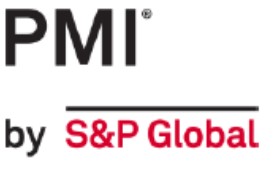The Global Purchasing Managers’ Index (PMI) for manufacturing produced by J P Morgan using the data from S&P Global improved to a neutral reading of exactly 50.0 – this is the first time it has not been below this level since August 2022. This was a combination of output volumes increasing for the first time in 8 months and new orders falling at the slowest pace in what is now a 19-month downturn period; it was also helped along by an increase in suppliers’ delivery times. The one weak point is that the increase in output was driven by the consumer goods sector, with investment goods output the only sub-sector where production is still falling.
The UK shared in a general trend of improvement while still indicating a contraction in activity for the manufacturing sector with the PMI rising to 47.0 – however, it is worth noting that this was below the flash estimate which we reported last week and it is now 18 months since we saw the reading above 50. The “improved” reading was driven largely (and perversely) by an extension of suppliers’ delivery times which is being caused by extended shipping times due to the attacks in the Red Sea and the diversion of shipping. Output fell at the same pace as in December and this reduction was seen in all three of the sub-sectors (consumer, intermediate and investment goods).
In the Euro-zone, we see the same effect with the overall PMI not as weak as in December 2023 but still in negative territory at 46.6, although this is its highest reading for 10 months. All 8 of the Euro-zone countries covered by the report had a higher reading than in December but, equally and with the exception of Greece, they were all still below the crucial 50 level. For the Euro-zone as a whole, output and new orders fell at their slowest pace since last April and, as in the UK, the index was helped up by the perverse impact of extended suppliers’ delivery times.
It is in the other EU countries which have a PMI survey where we see a different pattern; the reading for Czechia improved from the December reading but at 43.0 it is (just) the lowest of all the countries in this report. Elsewhere, Hungary, Poland (fractionally) and Sweden saw their manufacturing PMI lower than in December – for the first of these, this meant its first negative reading since last September.
Of the other two non-EU countries that we monitor, the reading for Switzerland only edged up and remains very weak at 43.1 while Turkiye saw a more significant improvement although at 49.2 it still implies a contraction of activity in the manufacturing sector.
In Asia, we see a mix of levels for the manufacturing PMI with only Japan and Taiwan having a negative reading in the latest data at 48.0 and 48.8 respectively. The ASEAN region saw an improvement that took them back into a positive position for the first time since last August at 50.3, with South Korea also making the same move with their reading of 51.2 the best since June 2022 (note that both of these had PMIs of exactly 50.0 in November 2023). The reading for China was unchanged at 50.8, while India continues to be the star performer globally with their manufacturing PMI increasing to 56.5.
In the Americas, only Mexico saw a lower reading than in December but it was still just in positive territory at 50.2. The other 4 countries all saw a substantial increase in the manufacturing PMI with both the USA and Brazil moving back into positive territory for the first time since last April and August respectively; despite the improvement, Canada remains below the 50 threshold but Columbia strengthened its already positive reading.
Across the 27 countries/regions that we cover in this analysis, 9 had PMI readings above 50 – this is a modest improvement on December when only 6 were in this position. We have already noted the top (India) and bottom (Czechia) scoring countries and compared to the December 2023 readings, the most significant improvement was in Brazil (up 4.4 points) and the largest reduction was in Mexico (down 1.8 points).
The individual S&P Global PMI reports are available to download on their web-site at https://www.pmi.spglobal.com/Public/Release/PressReleases but we also have a summary charts report which is available to download below. You should note that the PMI readings for Hungary, Sweden and Switzerland are not compiled by S&P Global but can be found with an appropriate internet search (it also means that they are not part of the global PMI calculation).

